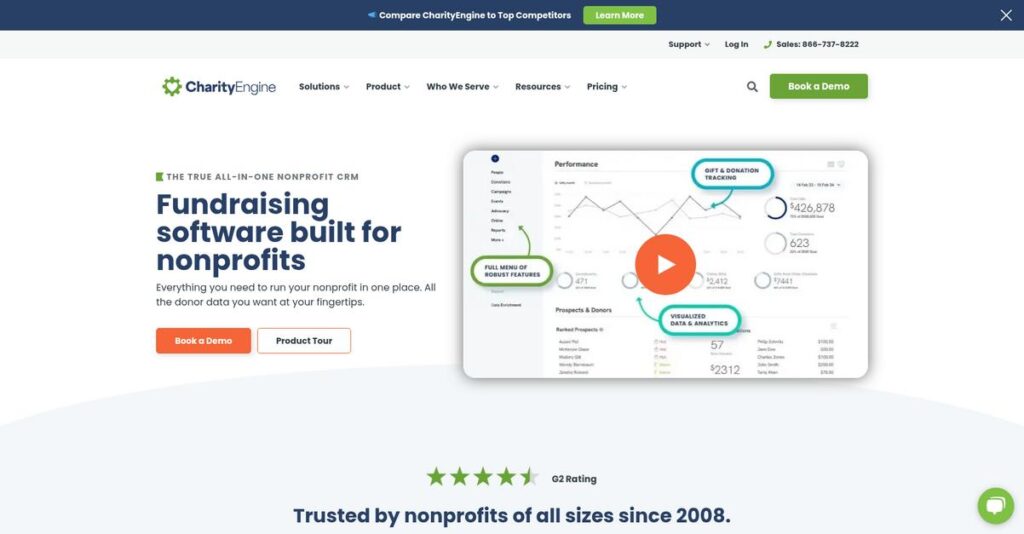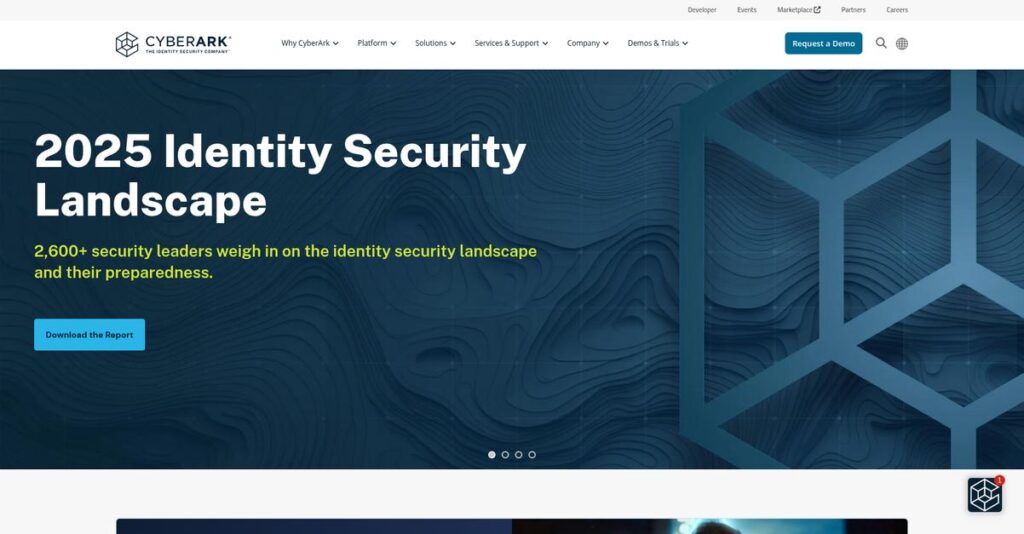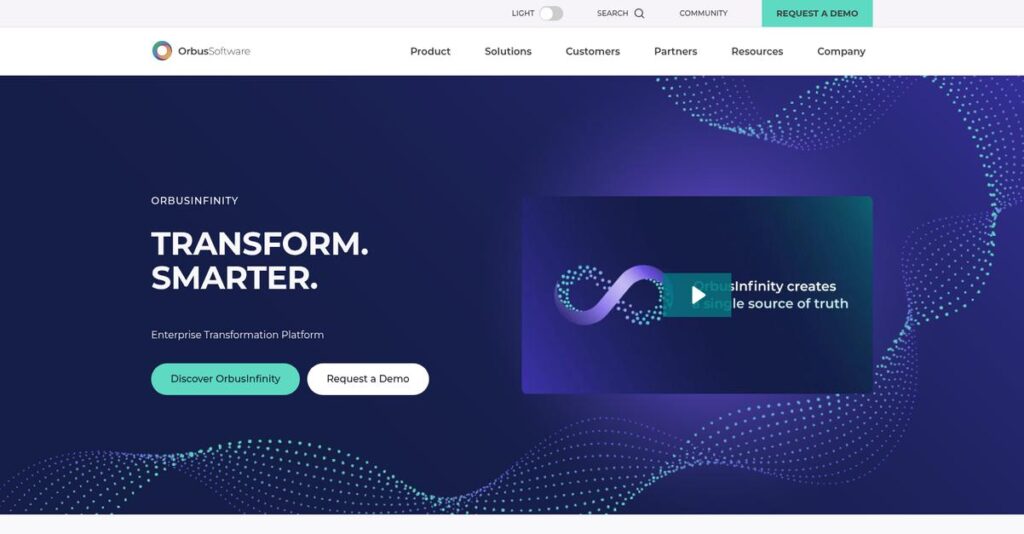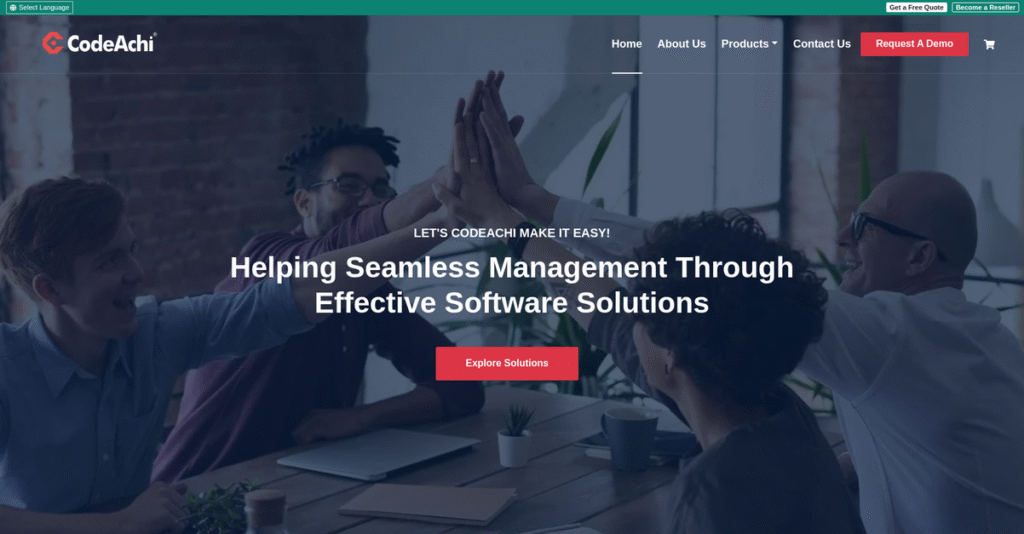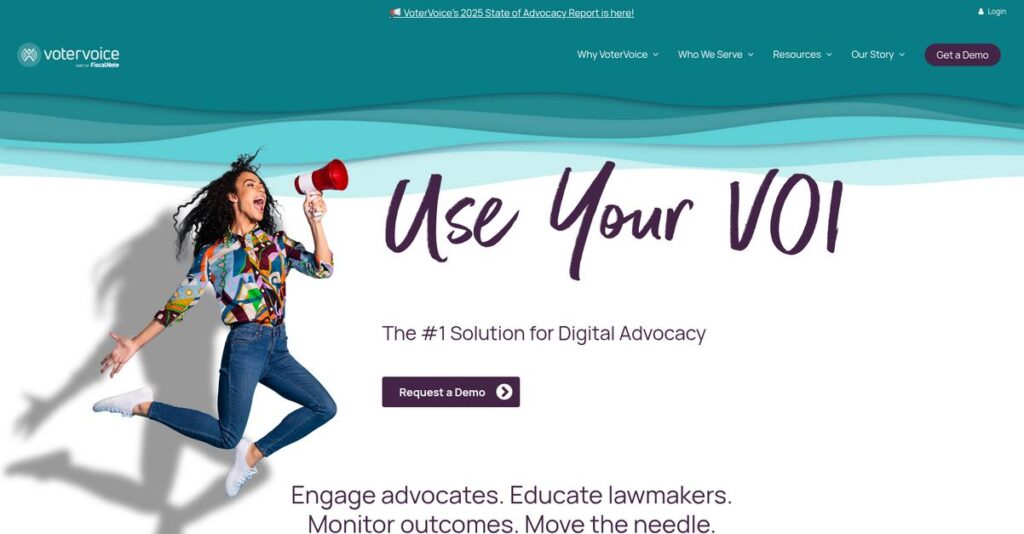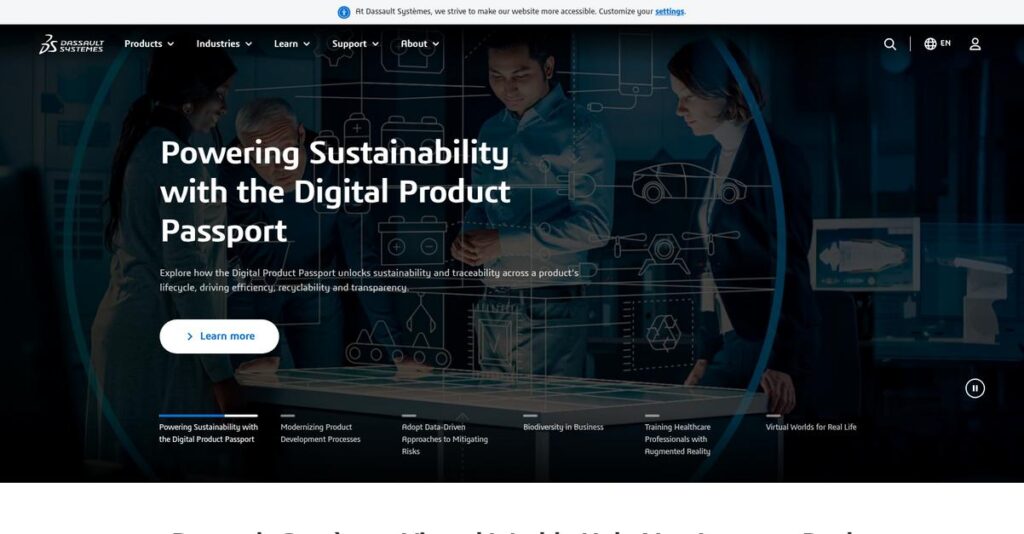Donor data everywhere and nothing connects.
If you’re managing a nonprofit, you probably spend too much time juggling clunky spreadsheets, disconnected databases, and separate fundraising tools just to run daily operations.
And let’s be honest—the constant switching and duplicate data entry ends up costing you hours every single day that should be used engaging donors, not wrestling with systems.
CharityEngine aims to change all of that by giving you an all-in-one platform that actually ties online fundraising, donor management, events, marketing, and analytics together, so you can finally see the full picture without headaches. I’ve spent hours digging into how CharityEngine really works and what sets it apart from piecemeal software stacks.
In this review, I’ll break down how CharityEngine helps you reclaim your time and simplifies your daily nonprofit workflows.
In this CharityEngine review, you’ll see core features, pricing, hidden pros and cons, and how it compares to alternatives so you can confidently weigh your options.
You’ll walk away knowing the features you need to make a smart, no-regret software decision for your nonprofit.
Let’s dig right in.
Quick Summary
- CharityEngine is an all-in-one cloud-based CRM and fundraising platform designed to centralize nonprofit donor management and streamline operations.
- Best for nonprofits running complex multichannel campaigns and seeking integrated fundraising tools.
- You’ll appreciate its native platform that combines donor data, event management, and marketing automation in a single system.
- CharityEngine offers tiered pricing from $350/month with no free trial, requiring direct contact for enterprise quotes.
CharityEngine Overview
CharityEngine is an all-in-one nonprofit platform that has been around since 2005. Based out of Virginia, I see their core mission as simplifying the technology behind fundraising and donor management.
I found they specifically target nonprofits frustrated with patching together different systems. Their key difference is a commitment to being a truly native all-in-one platform, which helps you eliminate messy data silos for good.
Recent product developments like their SustainerIQ tool show a smart focus on growing recurring revenue, a key point we’ll explore more deeply through this CharityEngine review.
- 🎯 Bonus Resource: Speaking of streamlining operations, if you’re also exploring software solutions for different business needs, my guide on best dry cleaning software might be insightful.
Unlike rivals like Blackbaud or the complex Salesforce NPSP, their platform is purpose-built for nonprofit fundraising from the ground up. This focus makes their tools feel much more intuitive for your team’s daily tasks.
They work with a diverse set of organizations—from national advocacy groups to large-scale public charities and foundations—that need to manage sophisticated multi-channel fundraising campaigns effectively.
From what I can tell, their entire strategy is about giving you a single source of truth for every donor interaction. This directly addresses the market’s need for a complete 360-degree view.
Now let’s examine their core features.
CharityEngine Features
Frustrated with juggling multiple nonprofit tools?
CharityEngine features provide a truly all-in-one platform for managing your nonprofit’s operations. These are the five core CharityEngine features that can help your organization streamline efforts and boost impact.
- 🎯 Bonus Resource: While we’re discussing comprehensive platforms, understanding how a serverless platform can help with overhead is equally important.
1. Donor Management and CRM
Are you losing track of donor interactions?
Scattered donor data means you miss opportunities for personalized engagement. This can lead to lower donor retention and less effective campaigns.
CharityEngine’s Donor Management provides a 360-degree view of every constituent, centralizing all interactions and preferences. From my testing, the automatic duplicate detection really shines, keeping your database clean and reliable. This feature helps you segment lists and understand fundraising details across all campaigns.
This means you can cultivate stronger donor relationships and make more informed decisions about your fundraising strategy.
2. Online Fundraising and Payment Processing
Struggling with complicated online donation systems?
Clunky donation forms and insecure payment processing can deter potential donors. This creates unnecessary friction that impacts your fundraising efforts.
CharityEngine simplifies online giving with customizable forms and PCI-certified payment processing. What I love about this approach is how SustainerIQ actively boosts monthly giving by optimizing recurring donation efforts. This feature includes mobile and text-to-give options, making it easy for donors to contribute.
The result is you get a secure, efficient fundraising channel that maximizes your ability to accept various types of donations.
3. Event Management
Planning events feels like a logistical nightmare?
Managing event logistics, from tickets to auctions, often consumes too much time and resources. This can detract from the donor experience you want to provide.
CharityEngine’s Event Management streamlines the entire process, handling everything from ticket sales to silent auctions. Here’s what I found: it simplifies attendee tracking and auction management, allowing you to focus on creating memorable experiences. This feature means less administrative burden and more engagement.
So you can execute seamless fundraising events, ensuring your team focuses on donor interaction rather than operational headaches.
4. Marketing Automation and Communication
Is your communication with donors inconsistent?
Manual communication processes make it hard to engage donors effectively or at scale. This can lead to missed opportunities for advocacy and donations.
CharityEngine offers robust marketing automation, including high-volume email campaigns and social media integration. This is where CharityEngine shines; its automation ensures targeted deliverability and tracks outcomes from delivery to donation. This feature also handles automated receipts and personalized thank-you emails, ensuring timely follow-up.
This means you can launch sophisticated, personalized communication strategies that truly resonate with your audience and drive engagement.
5. Reporting and Analytics
Can’t get clear insights from your fundraising data?
Lack of real-time data and customizable reports makes it difficult to track performance. This prevents data-driven decisions that could optimize your strategies.
CharityEngine provides comprehensive reporting and analytics with customizable dashboards, offering real-time insights. From my evaluation, the advanced query builder stands out, allowing you to create segmented lists and detailed reports. This feature helps you track campaign performance and analyze donor data easily.
This means you can finally make informed, data-driven decisions that significantly improve your fundraising strategies and overall organizational impact.
Pros & Cons
- ✅ Comprehensive all-in-one platform centralizing all nonprofit operations.
- ✅ Robust donor management offering a 360-degree view of interactions.
- ✅ Excellent reporting and custom dashboards for data-driven insights.
- ⚠️ Steeper learning curve for new users due to complexity.
- ⚠️ Email framework can be clunky and counter-intuitive for some users.
- ⚠️ Occasional sluggish performance and slow loading times reported.
You’ll quickly find that these CharityEngine features truly work as a cohesive, unified platform, eliminating data silos and giving you a complete view of your nonprofit.
CharityEngine Pricing
What’s the real cost for your nonprofit?
CharityEngine pricing offers tiered plans for smaller organizations and custom quotes for larger enterprises, providing options that align with various budget sizes.
| Plan | Price & Features |
|---|---|
| Standard | $350-$700/month • 5 users & 25,000 contacts • CRM & donor management • Custom donation forms • Built-in payment processing |
| Professional | $700-$1,500/month • Tiered pricing for growth • Advanced features • Scalable contact/email volume • Enhanced support options |
| Enterprise | Custom pricing – contact sales • Dedicated specialized team • Advanced query builder & API • Marketing automation & CMS • Consulting & account manager |
1. Value Assessment
Solid value for nonprofits.
CharityEngine’s pricing is structured to deliver an all-in-one platform, helping you avoid the hidden costs and complexities of integrating multiple tools. What I found regarding pricing is that it aims to simplify your tech stack while providing robust features for fundraising and donor management.
This means your budget gets a comprehensive solution, reducing the need for costly add-ons or custom development.
2. Trial/Demo Options
No free trial, but demos exist.
While CharityEngine doesn’t offer a free trial or freemium version, you can schedule a personalized demo to explore its capabilities. From my cost analysis, this allows you to see the platform’s value tailored to your specific needs before making a financial commitment.
This helps you evaluate how the software fits your operations without immediately impacting your budget.
- 🎯 Bonus Resource: Speaking of specialized platforms, if you’re looking for other unique solutions, my guide on best dance studio software offers insights.
3. Plan Comparison
Choosing the right plan for you.
The Standard tier is a strong fit for smaller nonprofits, covering essential CRM and fundraising needs. As your organization grows, the Professional tier scales with more contacts and emails. What stands out is how the Enterprise tier offers a truly customized solution for large, complex operations.
This tiered approach ensures you can match CharityEngine pricing to your current size and future growth requirements.
My Take: CharityEngine’s pricing strategy focuses on delivering comprehensive value, making it an excellent choice for nonprofits seeking an integrated platform that grows with their needs.
The overall CharityEngine pricing reflects integrated value designed for nonprofit growth.
CharityEngine Reviews
What do real customers actually think?
This section dives into CharityEngine reviews, analyzing genuine user feedback to provide balanced insights into what actual customers experience with the platform, sourced from various review sites.
1. Overall User Satisfaction
Most users feel positively about it.
From my review analysis, CharityEngine reviews reveal a general positive sentiment, especially concerning its all-in-one capabilities. What impressed me about user feedback is how many appreciate the comprehensive feature set, making it a “one-stop shop” for their needs.
This suggests you can expect a solution that consolidates many operational areas.
2. Common Praise Points
The all-in-one nature wins users over.
Users consistently praise CharityEngine for its ability to maintain and track all business needs in one location. What stood out in customer feedback is how customizable reports and dashboards streamline data access and make compiling relevant information incredibly easy for teams.
This means your organization can easily compile and share critical data.
- 🎯 Bonus Resource: If you’re also looking into optimizing your outreach, my article on content distribution platform covers additional strategies.
3. Frequent Complaints
Some processes are frustratingly clunky.
Several CharityEngine reviews highlight a steep learning curve and overly complicated processes as common pain points. What stands out in feedback is how the email framework is frequently cited as counter-intuitive, sometimes not working as expected, along with slow performance.
These issues might require patience or reliance on customer support.
What Customers Say
- Positive: “CharityEngine is user-friendly, comes with full support, and allows all your business needs to be maintained and tracked in one location. It is truly a one-stop shop.”
- Constructive: “While CharityEngine does allow reasonably robust storage and querying of data if you plan to send emails through your CRM, look elsewhere. CharityEngine’s framework is clunky.”
- Bottom Line: “CharityEngine has allowed our organization to grow in the past few years, but it has not kept up with industry trends and avoids making changes and updates.”
Overall, CharityEngine reviews indicate a powerful platform for consolidation, but users should prepare for some usability challenges, particularly with certain modules.
Best CharityEngine Alternatives
Choosing the right nonprofit CRM can be tough.
The best CharityEngine alternatives include several strong options, each better suited for different business situations, budget considerations, and specific operational needs.
1. Blackbaud CRM / Raiser’s Edge NXT
Need a deeply entrenched industry standard?
- 🎯 Bonus Resource: Speaking of industry standards, my guide on online teaching software explores more.
Blackbaud is a long-standing name, often chosen by larger, established organizations for its brand familiarity and a large user base. What I found comparing options is that Blackbaud offers a vast ecosystem of tools, though they frequently operate separately, requiring manual data handling.
Choose Blackbaud when brand familiarity and a large user base are more critical than a unified data platform.
2. Neon One / Neon CRM
Prefer an affordable, user-friendly system for smaller teams?
Neon One excels for small to mid-size nonprofits prioritizing ease of use and a shallow learning curve for core CRM and fundraising needs. From my competitive analysis, Neon provides a budget-friendly and intuitive alternative, though it may lack some of CharityEngine’s deeper native integrations for complex campaigns.
Consider this alternative when affordability and simplicity for essential donor management are your top priorities.
3. Virtuous CRM
Focused on responsive fundraising and advanced automation?
Virtuous shines for organizations emphasizing personalized donor journeys, A/B testing, and automation to drive “responsive fundraising.” Alternative-wise, I found that Virtuous prioritizes intuitive automation for donor engagement, but it often requires integrating third-party tools for functions CharityEngine offers natively.
Choose Virtuous when cutting-edge donor personalization and automation are paramount, even if it means relying on integrations.
4. Salesforce Nonprofit Cloud (NPSP)
Seeking maximum customization and ecosystem breadth?
Salesforce Nonprofit Cloud (NPSP) is ideal if you require extensive customization capabilities and already operate within the Salesforce ecosystem. From my analysis, Salesforce NPSP offers unmatched configurability and scalability, but it typically demands significant technical expertise and budget for implementation and ongoing management.
Choose Salesforce NPSP if you have in-house technical resources and a large budget for a highly tailored solution.
Quick Decision Guide
- Choose CharityEngine: Native all-in-one platform for unified fundraising operations
- Choose Blackbaud CRM: Established brand for large organizations, willing to manage data silos
- Choose Neon One: Affordable and user-friendly for small to mid-sized nonprofits
- Choose Virtuous CRM: Responsive fundraising with strong automation features
- Choose Salesforce NPSP: Highly customizable for complex needs and large budgets
The best CharityEngine alternatives depend on your organization’s specific scale, budget, and integration preferences more than just feature sets.
CharityEngine Setup
Thinking about implementation complexity and timeline?
A CharityEngine review reveals its implementation is a thoughtful process, balancing comprehensive features with the need for dedicated preparation to ensure successful deployment.
1. Setup Complexity & Timeline
This isn’t a quick flip of a switch.
CharityEngine implementation involves configuring a robust CRM, migrating data, and customizing features to fit your nonprofit’s unique workflows. From my implementation analysis, expect a moderate timeline for full deployment, as comprehensive systems always require careful setup for optimal performance and user adoption.
You’ll need to allocate internal resources for discovery, data preparation, and active participation in the setup phases.
- 🎯 Bonus Resource: Speaking of diverse assets, my guide on the best NFT platform covers scalability and digital asset management.
2. Technical Requirements & Integration
Prepare your IT for integration work.
CharityEngine operates cloud-based, accessible via web browser, but its open API means you’ll likely integrate it with other crucial systems in your tech stack. What I found about deployment is that custom integrations often require developer resources, especially if connecting to legacy or niche applications for specific data needs.
Ensure your IT team is ready to manage API connections and data flow, as this is key for a truly unified platform.
3. Training & Change Management
User adoption is critical for success.
Training new employees on CharityEngine will take time due to its comprehensive nature, so plan for a learning curve across your team. From my analysis, effective change management prevents adoption roadblocks by emphasizing the “why” behind the new system and providing ongoing support.
Invest in structured training sessions and identify internal champions to guide your team through the transition and maximize system utilization.
4. Support & Success Factors
Vendor support makes a real difference.
CharityEngine offers hands-on implementation support, monthly feature reviews, and various channels like phone, email, and live chat. From my implementation analysis, proactive engagement with their support team is key to overcoming challenges and leveraging the platform’s full capabilities throughout your deployment.
Plan to utilize their premium consulting and integration services to ensure a smooth implementation and ongoing optimization for your organization.
Implementation Checklist
- Timeline: Moderate; plan several months for full deployment.
- Team Size: Project manager, data lead, IT contact, department heads.
- Budget: Account for professional services and potential integration costs.
- Technical: Cloud-based access; plan for open API integrations.
- Success Factor: Dedicated internal project lead and robust user training.
Overall, a successful CharityEngine setup requires thoughtful planning and resource commitment, ensuring your nonprofit leverages its full potential.
Bottom Line
Is CharityEngine the right choice for your nonprofit?
My CharityEngine review demonstrates a powerful, all-in-one platform for nonprofits seeking a unified approach to fundraising and donor management.
1. Who This Works Best For
Nonprofits seeking a unified fundraising and CRM platform.
CharityEngine excels for small, mid-size, and enterprise nonprofits prioritizing a comprehensive solution to avoid data silos and gain a holistic donor view. From my user analysis, organizations running complex multichannel campaigns find this platform ideal for managing diverse fundraising strategies efficiently.
You’ll succeed if your goal is to streamline operations and enhance data-driven decision-making across your entire organization.
2. Overall Strengths
Integrated functionality and robust reporting truly stand out.
The software delivers a comprehensive suite of native tools, from email marketing to event management, all feeding into a single, real-time system. From my comprehensive analysis, the all-in-one approach minimizes data discrepancies and provides a unified donor view, saving you valuable time and effort.
These strengths translate into improved efficiency and more informed strategic decisions for your fundraising initiatives.
- 🎯 Bonus Resource: Speaking of leveraging advanced solutions for data, you might find my guide on best AI development platforms insightful.
3. Key Limitations
Learning curve and occasional clunky features.
While powerful, new users may experience a steeper learning curve due to the platform’s extensive features and occasionally counter-intuitive email framework. Based on this review, some processes can be overly complicated for routine tasks, leading to initial frustration for your team.
I find these limitations are manageable with dedicated training, but you should anticipate an adjustment period for full adoption.
4. Final Recommendation
CharityEngine receives a strong recommendation from me.
You should choose this software if your nonprofit needs a robust, integrated solution for managing fundraising and donor relationships, especially with complex campaigns. From my analysis, this solution is ideal for consolidating diverse operations and leveraging detailed donor insights effectively.
My confidence is high for nonprofits needing a comprehensive system, ensuring you can manage and grow your donor base efficiently.
Bottom Line
- Verdict: Recommended for comprehensive nonprofit CRM and fundraising
- Best For: Small, mid-size, and enterprise nonprofits seeking unified solutions
- Business Size: Organizations running complex multichannel campaigns and prioritizing data consolidation
- Biggest Strength: All-in-one platform with integrated fundraising and CRM tools
- Main Concern: Steeper learning curve and occasional clunky features
- Next Step: Request a demo to assess feature depth and user experience
This CharityEngine review confirms strong value for the right nonprofit, highlighting how its comprehensive nature can simplify your operations and enhance impact.
